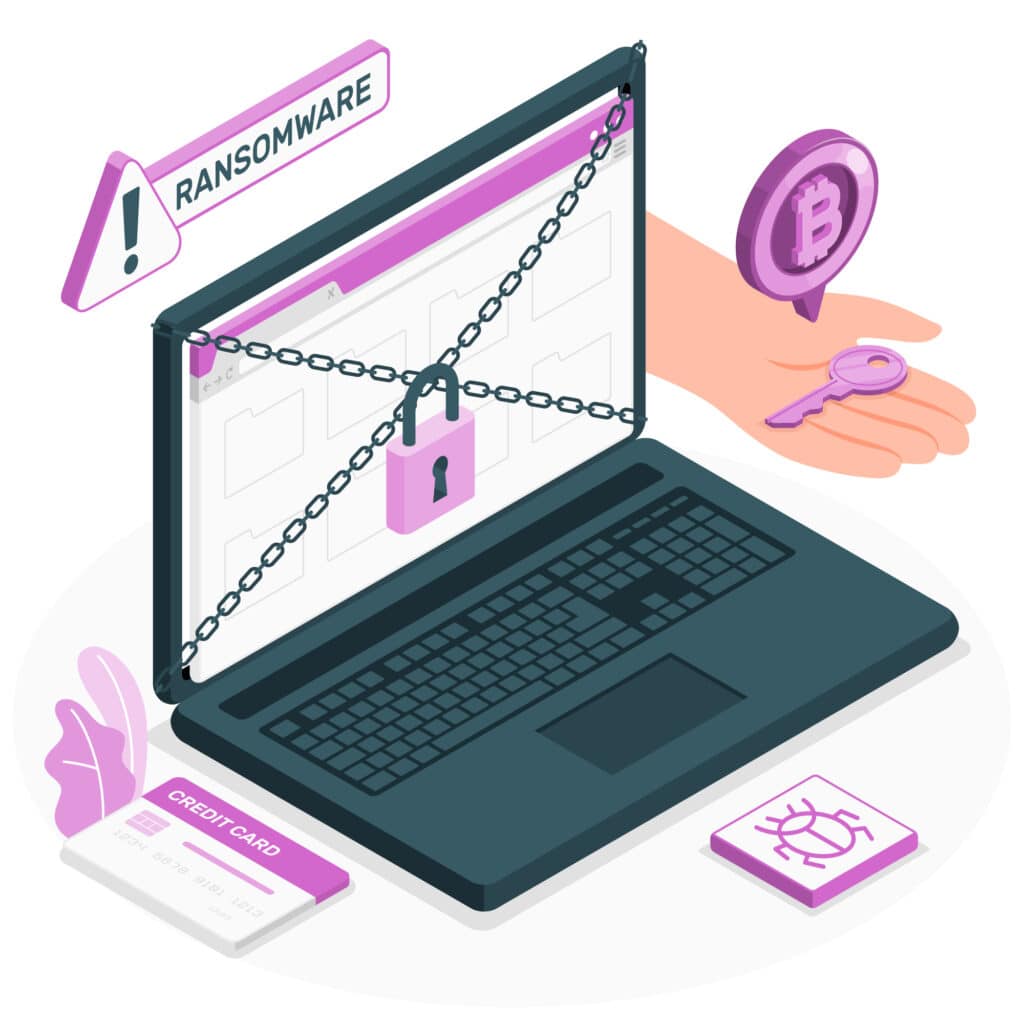In today’s hyper-connected world, businesses face an ever-growing threat from cybercriminals. Among the most dangerous and pervasive threats is ransomware—a type of malicious software that encrypts your files, rendering them inaccessible until a ransom is paid. For businesses, the consequences of a ransomware attack can be devastating, ranging from financial losses to reputational damage and operational downtime.
However, protecting your business from ransomware is not only possible but essential for long-term success. With the right strategies in place, you can safeguard your systems, secure your data, and ensure your business continues to thrive even in the face of evolving cyber threats.
In this comprehensive guide, we’ll explore 7 proven strategies to protect your business from ransomware attacks . These actionable steps will help you build a robust defense, minimize risks, and create a resilient cybersecurity framework.
1. Prioritize Regular Software Updates
One of the most common entry points for ransomware is outdated or unpatched software. Cybercriminals actively exploit vulnerabilities in operating systems, applications, and firmware to gain unauthorized access to your network. Failing to update your software leaves your business exposed to these threats.
Why Software Updates Matter
Software updates often include critical security patches that address known vulnerabilities. By applying these updates promptly, you close the doors that hackers might otherwise use to infiltrate your systems.
Action Steps for Businesses
- Enable Automatic Updates : Configure all devices, operating systems, and applications to install updates automatically. This ensures you don’t miss critical patches.
- Audit Your Systems Regularly : Conduct periodic audits to identify outdated software or devices that may have been overlooked.
- Prioritize Critical Patches : Focus on high-priority updates that address severe vulnerabilities, especially those flagged by vendors like Microsoft, Adobe, or Google.
Real-World Example
In 2017, the infamous WannaCry ransomware attack exploited a vulnerability in older versions of Windows. Organizations that had installed the relevant patch were protected, while those that hadn’t suffered significant disruptions.
By prioritizing regular software updates, you significantly reduce the risk of falling victim to ransomware.
2. Implement Robust Backup Solutions
A reliable backup strategy is one of the most effective ways to mitigate the impact of a ransomware attack. Without backups, recovering encrypted files can be nearly impossible—or extremely costly if you choose to pay the ransom.
The Importance of Backups
Backups act as a safety net, allowing you to restore your data quickly and avoid paying cybercriminals. However, not all backup solutions are created equal. To ensure maximum protection, follow best practices.
Best Practices for Backups
- Perform Daily Backups : Schedule automated backups to run at least once a day. For critical systems, consider more frequent backups (e.g., hourly).
- Use the 3-2-1 Rule : Maintain three copies of your data—two stored locally on different devices and one stored offsite (e.g., in the cloud).
- Test Your Backups Regularly : Ensure your backups are functional and can be restored without errors.
Offline vs. Cloud Backups
Storing backups offline (e.g., on external hard drives) ensures they remain inaccessible to ransomware. Alternatively, cloud-based backups provide scalability and ease of access but should be configured with strict access controls to prevent unauthorized access.
Case Study
A small accounting firm fell victim to ransomware in 2022. Thanks to their daily cloud backups, they were able to restore their data within hours and resume operations without paying the ransom.
Implementing a robust backup solution is a cornerstone of ransomware protection.
3. Train Employees to Recognize Threats
Human error remains one of the weakest links in cybersecurity. Phishing emails, malicious attachments, and social engineering tactics are frequently used by attackers to deliver ransomware. Educating your employees is crucial to preventing these threats.
Common Attack Vectors
- Phishing Emails : Emails that appear legitimate but contain malicious links or attachments.
- Social Engineering : Manipulating employees into divulging sensitive information or granting access.
How to Train Employees
- Conduct Regular Training Sessions : Teach employees how to identify phishing emails, suspicious links, and other red flags.
- Simulate Attacks : Use simulated phishing campaigns to test employee awareness and improve their response.
- Create a Culture of Security : Encourage employees to report suspicious activity immediately and reward proactive behavior.
Impact of Employee Training
A study by IBM found that human error accounts for 95% of cybersecurity breaches. By investing in employee training, you empower your workforce to become the first line of defense against ransomware.

4. Use Advanced Antivirus and Anti-Malware Tools
Traditional antivirus solutions are no longer sufficient to combat modern ransomware. Advanced tools that leverage artificial intelligence (AI) and machine learning (ML) are far more effective at detecting and blocking sophisticated threats.
Features to Look For
- Real-Time Scanning : Continuously monitors your systems for suspicious activity.
- Behavior-Based Detection : Identifies unknown malware by analyzing its behavior rather than relying on signature-based detection.
- Automatic Quarantine : Isolates suspicious files to prevent them from spreading.
Recommended Tools
- Endpoint Detection and Response (EDR) : Provides real-time data collection and analysis to detect advanced threats.
- Next-Gen Antivirus (NGAV) : Combines AI, ML, and behavioral analytics for superior protection.
Proactive Defense
Advanced antivirus tools not only block ransomware but also provide insights into potential vulnerabilities, helping you stay ahead of emerging threats.
5. Enforce Strong Access Controls
Limiting access to sensitive data and systems reduces the risk of ransomware spreading across your network. Weak or excessive access permissions can give attackers free rein to move laterally within your environment.
Steps to Strengthen Access Controls
- Apply the Principle of Least Privilege (PoLP) : Grant users only the permissions they need to perform their jobs.
- Require Multi-Factor Authentication (MFA) : Add an extra layer of security to all accounts, especially administrative ones.
- Regularly Review Permissions : Audit user access rights periodically and revoke unnecessary privileges.
Benefits of Access Controls
Strong access controls minimize the attack surface and make it harder for ransomware to escalate privileges or infect critical systems.
6. Segment Your Network
Network segmentation involves dividing your network into smaller zones based on functionality or sensitivity. This limits the spread of ransomware and isolates infected systems.
How to Segment Your Network
- Divide by Department or Functionality : Separate departments (e.g., HR, finance) or functions (e.g., servers, endpoints).
- Use Firewalls : Deploy firewalls to control traffic between segments and enforce strict access rules.
- Monitor Activity : Continuously monitor network traffic for unusual behavior that may indicate a breach.
Why Segmentation Works
If ransomware breaches one segment of your network, segmentation prevents it from spreading to other areas, reducing the overall impact.
7. Develop a Comprehensive Incident Response Plan
Even with the best defenses, no system is completely immune to ransomware. A well-prepared incident response plan ensures you can respond quickly and effectively, minimizing downtime and damage.
Key Components of an Incident Response Plan
- Define Roles and Responsibilities : Assign specific tasks to IT, security, and management teams.
- Establish Communication Protocols : Notify stakeholders, employees, and authorities promptly.
- Include Recovery Steps : Outline procedures for isolating infected systems, restoring data from backups, and resuming operations.
Practice Makes Perfect
Conduct regular drills to test your incident response plan and identify areas for improvement. This ensures your team is prepared to handle real-world scenarios.
Final Thoughts: Building a Resilient Business
Ransomware attacks are a serious threat, but they don’t have to spell disaster for your business. By implementing these 7 proven strategies , you can build a strong defense, protect your data, and ensure your business thrives in an increasingly digital world.
Remember, cybersecurity is not a one-time effort—it’s an ongoing process. Stay vigilant, keep learning, and adapt to emerging threats. With the right mindset and tools, you can turn ransomware protection into a competitive advantage.
Ready to Protect Your Business? Try Acronis Cyber Backup Today!
Secure your data with Acronis Cyber Backup from Aurages —the ultimate solution for ransomware protection and peace of mind.
✅ Key Features :
- Off-site backups for data redundancy
- Real-time ransomware and malware protection
- Vulnerability assessment to stay ahead of threats
Don’t wait until disaster strikes. Visit Acronis Cyber Backup to learn more and start today!


